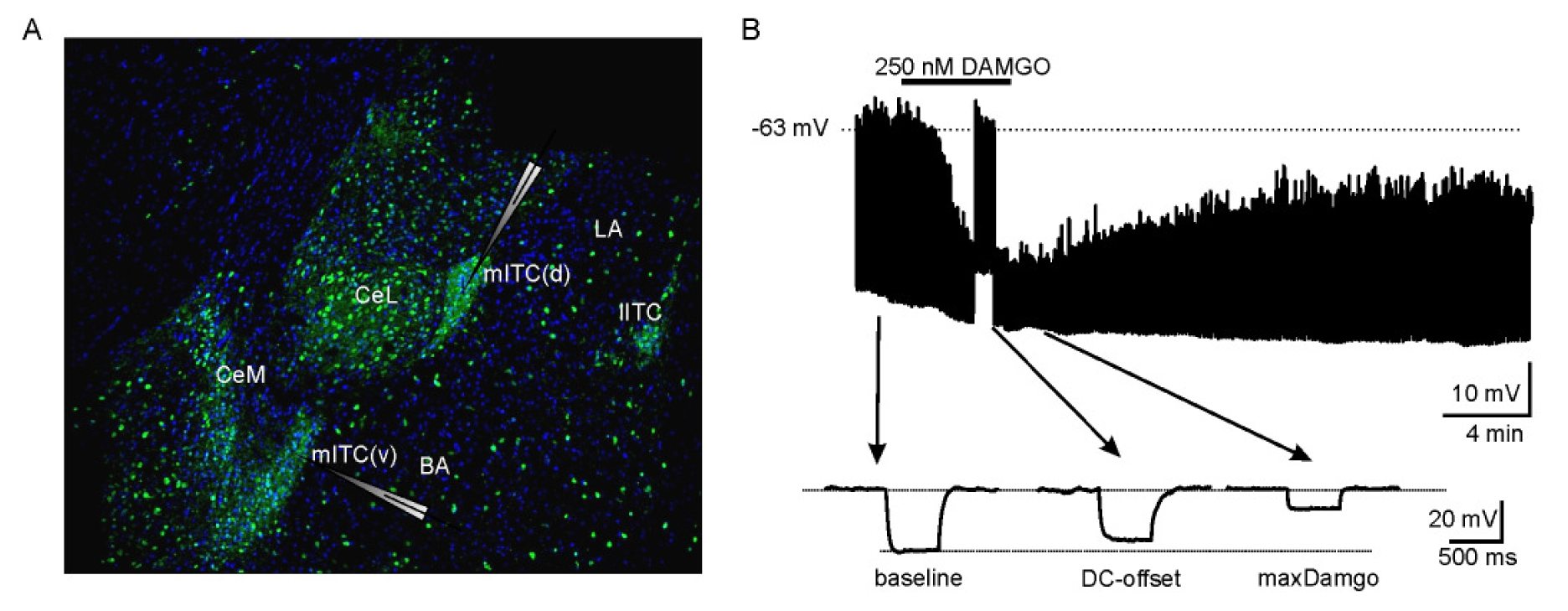μ-Opioid Receptor-Mediated Inhibition of Intercalated Neurons and Effect on Synaptic Transmission to the Central Amygdala.
Opioids are a class of drugs active in the nervous system. Opioids made in the brain are released in a brain region called amygdala when pain occurs. However, the underlying mechanisms of opioid action in amygdala are unknown. We found that activation of opioid receptors dampens the excitability of so-called GABAergic intercalated cells (ITCs), leading to global changes in amygdala excitability.
The amygdala is a key region for the processing of information underlying fear, anxiety, and fear extinction. Within the local neuronal networks of the amygdala, a population of inhibitory, intercalated neurons (ITCs) modulates the flow of information among various nuclei of amygdala, including the basal nucleus (BA) and the centromedial nucleus (CeM) of the amygdala. These ITCs have been shown to be important during fear extinction and are target of a variety of neurotransmitters and neuropeptides. Here we provide evidence that the activation of μ-opioid receptors (MORs) by the specific agonist DAMGO ([D-Ala2,N-Me-Phe4,Gly5-ol]-Enkephalin) hyperpolarizes medially located ITCs (mITCs) in acute brain slices of mice. Moreover, we use whole-cell patch-clamp recordings in combination with local electrical stimulation or glutamate uncaging to analyze the effect of MOR activation on local microcircuits. We show that the GABAergic transmission between mITCs and CeM neurons is attenuated by DAMGO, whereas the glutamatergic transmission on CeM neurons and mITCs is unaffected. Furthermore, MOR activation induced by theta burst stimulation in BA suppresses plastic changes of feedforward inhibitory transmission onto CeM neurons as revealed by the MOR antagonist CTAP d-Phe-Cys-Tyr-d-Trp-Arg-Thr-Pen-Thr-NH2. In summary, the mITCs constitute a target for the opioid system, and therefore, the activation of MOR in ITCs might play a central role in the modulation of the information processing between the basolateral complex of the amygdala and central nuclei of the amygdala.
